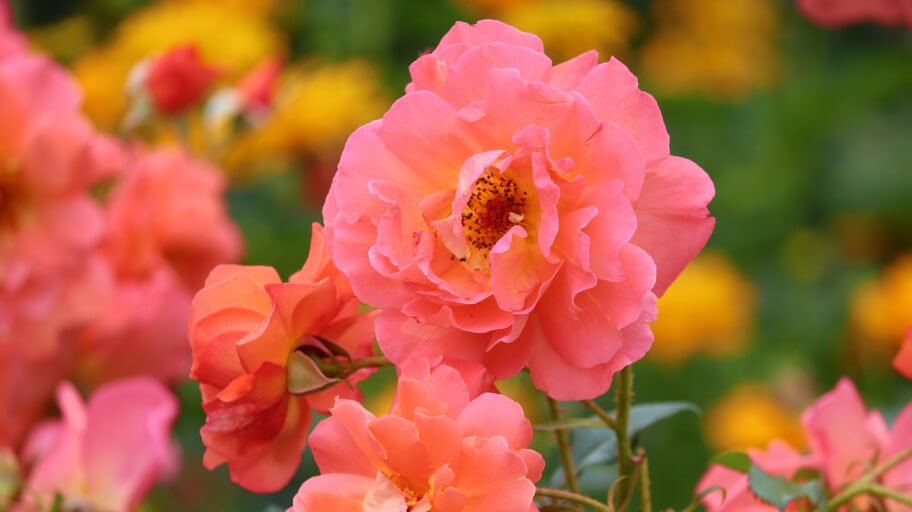
Do you have a mango tree? Maybe you are wondering how and when to prune your tree? Well then, you are in luck because this article is exactly for you. Read below to find the answers to the following questions:
Do mango trees really need pruning
Mangos, also called Mangifera Indica, are large, everlasting trees originating in South Asia. They are very popular in Australia, and the country produces over 46,000 tonnes each year. It is highly recommended to regularly prune your mango tree to keep it smaller in size. If left unattended, mango trees could grow to become gigantic. They could easily reach up to 100 feet in height with a canopy that can extend to more than 35 feet. This is definitely not a tree you want in your backyard.
Apart from their uncontrollable growth, there are other negatives of unpruned mango trees. They are obviously more difficult and, in some cases, even impossible to maintain. Unpruned mango trees are more likely to get infected by fungal diseases or other infections and produce lower-quality fruits. They are more expensive to treat, and usually, you would have to hire a professional tree surgeon to help you out.
Pruned mango trees, on the contrary, have a higher yield, more stable production, and better fruit quality. Furthermore, the tree is easier to harvest. A pruned, open canopy allows for air and sunlight to penetrate the interior of the tree, thus boosting its growth.
How to best prune a mango tree
Mango trees grow in size within the first 2-3 years of their life, which means that pruning in that period is crucial to keep them under control. The ideal mango tree should have 3 or maximum 4 main trunks, open canopy and be 3-4.5 meters high. You should be very careful when pruning your mango tree since if not done right, you risk damaging it and even leaving it fruitless for the next couple of years. There is a precise way to do this.
What you will need:
- Gardening gloves
- Pruning shears
- Lopping shears
- Pruning saw
Now that you have everything needed, you can begin the pruning process.
Pruning a young tree
Pruning of mango trees should begin early since this is crucial for their initial shaping. Once the tree reaches over 1 meter in height, it’s the main shoot should be cut back to 0.6 to 0.7 meters with the pruning shears.
Make sure to cut below the “ring of buds” which is the concentrated spiral of leaves on the main stem. At this point, the tree will probably have 6-7 branches. Cut some of them and leave 3-4 horizontal ones, each equally spread apart. This will be the main scaffolding of your mango tree.
After the branches grow over 1 meter in length, they should also be cut back to around 1 meter. Once again, the cut should be below the “ring of buds”. This should be enough for the moment.
Bear in mind that the idea behind this initial pruning is to shape the tree to grow in width and not so much in height.
Pruning after the first harvest
The next pruning should be done immediately after the first harvest. This will prepare the tree for the next season and will keep it healthy and growing.
- Use the lopping shears and start by removing all diseased or dead branches for hygienic purposes and to keep infections from spreading.
- Following this, cut all hanging branches to keep fruit from dragging on the ground – the process is called skirting.
- Then, proceed to cut vertical shoots as opposed to horizontal ones. Remember, the idea is to make this a spreading tree rather than a very tall tree. This will improve its fruit production and quality.
- Trim the horizontal branches down to about 20 inches in length.
- Make sure to open up the mango tree – i.e. remove all branches that clutter its centre. This will help air and sunlight reach all parts of the tree, which will naturally stimulate its growth.
- It always makes it easier to spray and treat the mango tree against any infections.
Pruning before flowering
Conduct this pruning before flowering; otherwise, you risk crop loss. Use a pruning saw to cut hanging, dead and diseased branches. Remove one major limb per year to keep the focus of the tree to fruit production. It is best to choose a vertical one and always cut it down to the trunk. Make sure there are no other trees or plants too close to your mango tree. If necessary, cut the side branches at least 20 inches from nearby trees since they could extend perpendicularly from the main structural limbs.
Similar to the post-first harvest pruning, remove any branches that clutter the inside of the tree. This way, you will open the canopy for air and sunlight and make the treating process more manageable and painless.
When to prune your mango tree
There is usually no need to prune your mango tree on an annual basis. The initial (light) pruning should be done in the spring or in the summer when the tree reaches over 1 meter in height. The second pruning should be done immediately after the first harvest. For some varieties ripening can be in March-April. This is usually 2-3 years following the planting of the mango tree. The third, pre-flowering pruning is time-sensitive and should be complete 2-4 weeks before the flowering process begins in May. Following the first few years of pruning, the need to do this on a regular basis will be reduced and ultimately eliminated.
Takeaways
- Mango trees could grow to be up 30 meters in height and over 10 meters in width if left unpruned;
- The perfect mango tree is low-set with a height of up to 3-4 meters, open canopy and three or maximum four main trunks;
- The first pruning of the young mango tree is extremely important for its initial shaping;
- Second pruning is conducted immediately after the first harvest;
- A third pruning should be completed before flowering;
- Make sure to keep the canopy of the mango tree open – this will help keep it healthy, sunlit and aerated;
- Lower, spreading mango trees provide better quality fruits and more stable production as opposed to tall ones.
Tree pruning is not your thing?
A reliable Fantastic gardener can take care of your trees!








